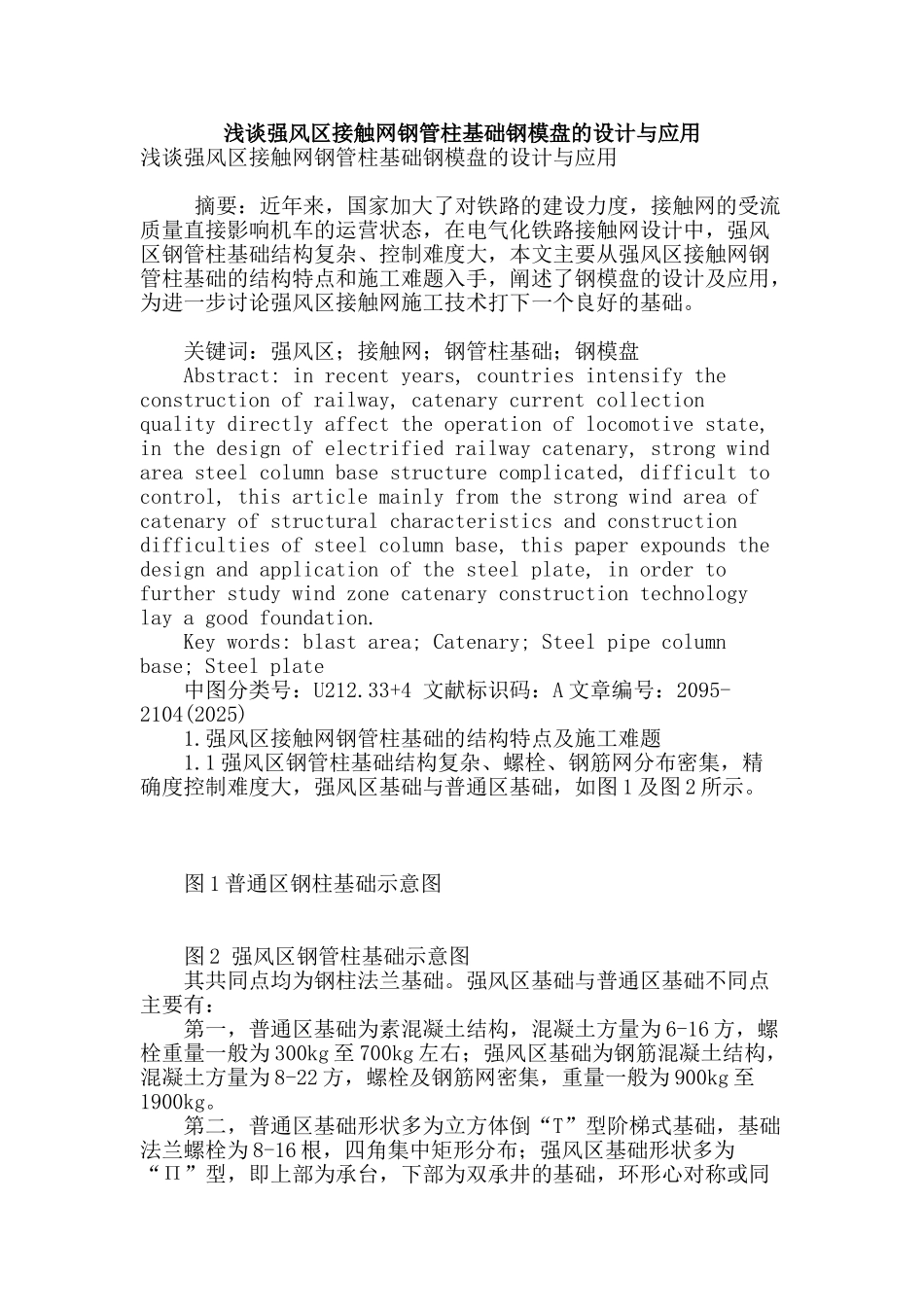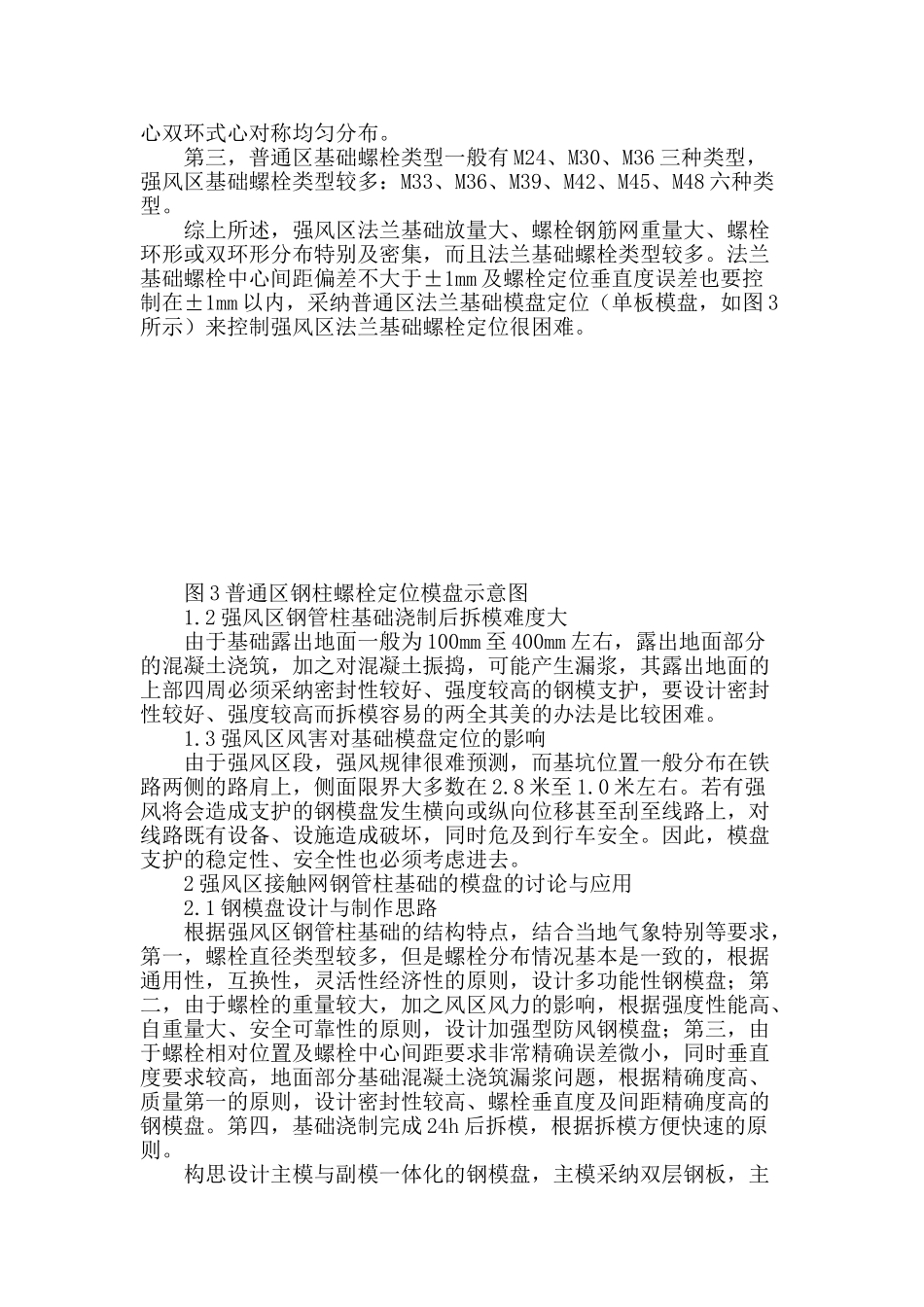浅谈强风区接触网钢管柱基础钢模盘的设计与应用浅谈强风区接触网钢管柱基础钢模盘的设计与应用 摘要:近年来,国家加大了对铁路的建设力度,接触网的受流质量直接影响机车的运营状态,在电气化铁路接触网设计中,强风区钢管柱基础结构复杂、控制难度大,本文主要从强风区接触网钢管柱基础的结构特点和施工难题入手,阐述了钢模盘的设计及应用,为进一步讨论强风区接触网施工技术打下一个良好的基础。 关键词:强风区;接触网;钢管柱基础;钢模盘 Abstract: in recent years, countries intensify the construction of railway, catenary current collection quality directly affect the operation of locomotive state, in the design of electrified railway catenary, strong wind area steel column base structure complicated, difficult to control, this article mainly from the strong wind area of catenary of structural characteristics and construction difficulties of steel column base, this paper expounds the design and application of the steel plate, in order to further study wind zone catenary construction technology lay a good foundation. Key words: blast area; Catenary; Steel pipe column base; Steel plate 中图分类号:U212.33+4 文献标识码:A 文章编号:2095-2104(2025) 1.强风区接触网钢管柱基础的结构特点及施工难题 1.1 强风区钢管柱基础结构复杂、螺栓、钢筋网分布密集,精确度控制难度大,强风区基础与普通区基础,如图 1 及图 2 所示。 图 1 普通区钢柱基础示意图 图 2 强风区钢管柱基础示意图 其共同点均为钢柱法兰基础。强风区基础与普通区基础不同点主要有: 第一,普通区基础为素混凝土结构,混凝土方量为 6-16 方,螺栓重量一般为 300kg 至 700kg 左右;强风区基础为钢筋混凝土结构,混凝土方量为 8-22 方,螺栓及钢筋网密集,重量一般为 900kg 至1900kg。 第二,普通区基础形状多为立方体倒“T”型阶梯式基础,基础法兰螺栓为 8-16 根,四角集中矩形分布;强风区基础形状多为“П”型,即上部为承台,下部为双承井的基础,环形心对称或同心双环式心对称均匀分布。 第三,普通区基础螺栓类型一般有 M24、M30、M36 三种类型,强风区基础螺栓类型...


